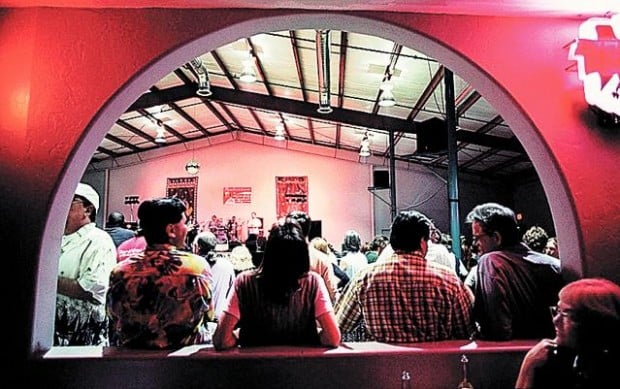Tucson's famed El Casino Ballroom, where generations of Tucsonans held weddings, dances, quinceañeras, baptisms and other social functions, started with a $5 check.
Dated Sept. 14, 1947, the check was made out to El Casino, the first day it opened. Businessman Oliver Drachman, a scion of Tucson's pioneering Drachman family, signed the check as the Casino's first customer.
Friday and Saturday the popular ballroom will celebrate its 60th anniversary. In its time the ballroom, at East 26th Street and South Second Avenue, was the primary social gathering place for Tucson's Mexican-American families.
Some of the biggest American and Latino musical acts performed at El Casino. Even after a disastrous 1991 roof collapse the venerable Casino Ballroom rose from temporary darkness and in 2000 resumed its role in Tucson's cultural history.
But the real start of the Casino began several years before it opened. Its story is told by one of its three founders, Adolfo C. Loustaunau. His self-published 1986 autobiography, "Los Dos Mundos de Fitín," or "The Two Worlds of Fitín," chronicles Tucson's Mexican-American social history before and after World War II.
Loustaunau was born in Chihuahua, Mexico, in 1910 and lived in Sonora for some years before moving to Tucson in 1928. In 1933 he married Dolores Rodriguez, and they had two sons. In 1983 he married Alicia Camacho Fregoso, and in October 2000, Loustaunau died at 90.
He was well-known in Tucson before he and his partners, Benjamín P. Jacobs and Ramón V. Siqueiros, dreamed of building El Casino.
Loustaunau worked for Drachman, owner of Tucson Laundry and Dry Cleaners, grandson of Philip Drachman, the family's patriarch. And for a time, Loustaunau also worked for Margarito Garcia, a tailor and owner of a dry cleaning business, which is still operated by the Garcia family.
His autobiography is full of Tucson family names and places. His first home was on South Meyer Avenue and for 11 years the Loustaunaus lived in what is known today as the Sosa-Carrillo-Fremont House Museum, part of the Arizona Historical Society.
On Sundays, he wrote, the family would go to Armory Park, the old Wetmore Park or to Sabino Canyon. They attended family fiestas, weddings and baptisms. They watched movies at the Lyric and Rialto theaters, and they attended live shows at the Opera House.
There were social clubs like La Alianza Hispanoamericana, El Club Latino and the Latin American Social Club. He joined fraternal clubs, such as Woodmen of the World and the Veterans of Oury Park.
Tucson's Mexican families would dance to local big bands at the Blue Moon and River Side ballrooms and they would celebrate Mexican Independence Day and Cinco de Mayo.
But one day, Loustaunau and his friends dreamed of a ballroom with a large shiny dance floor where Mexican-American families could congregate and celebrate.
Loustaunau, Jacobs and Siqueiros bought three lots of desert on the fringe of the city limits and over the weekends they, along with family, friends and hired workers, built the ballroom.
The Casino was named after ballrooms in Hermosillo and Guaymas, Sonora.
They set the opening date on Sept. 14, a Sunday. They invited their many Mexican and American friends, including Oliver Drachman. Their wives, Dolores, Carlota Jacobs and Aurora Siqueiros, made barbacoa.
At noon the doors opened, Francisco Quiroz and his orchestra struck up the music, and with Drachman leading the way, El Casino Ballroom was born.
Opinion by
Ernesto
Portillo jr.
IF YOU GO
The 60th Anniversary will be celebrated Friday from 7 p.m. to 1 a.m. and Saturday from 1 to 11 p.m. It's at East 26th Street and South Second Avenue.





